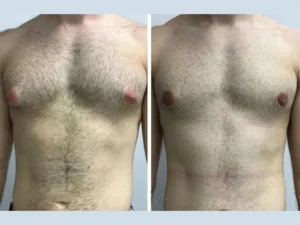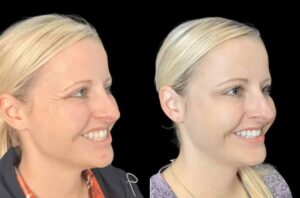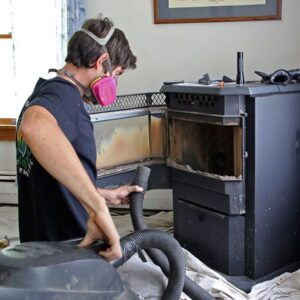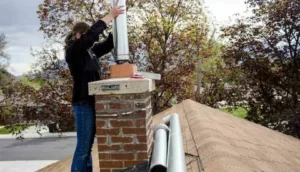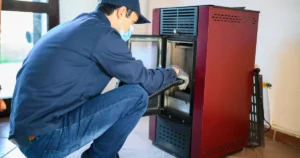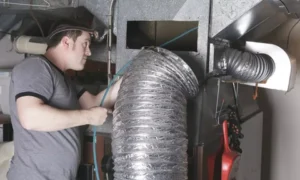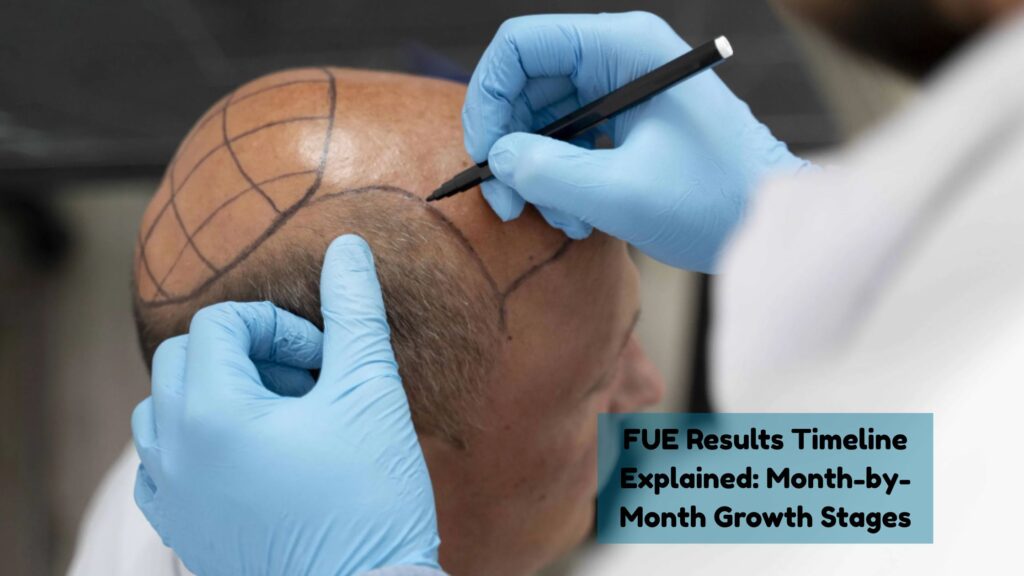
fue results
Nowadays, one of the most sophisticated and realistic-looking hair restoration methods is Follicular Unit Extraction (FUE). Whether you’re combating male pattern baldness or aiming to fill in thinning patches, FUE offers long-lasting solutions with minimal scarring. However, understanding how FUE results unfold over time is crucial for managing expectations and staying motivated through your hair restoration journey.
This month-by-month breakdown will help you understand what changes to expect after your FUE procedure and how your hair transforms from surgery day to final results.
First 2 Weeks: Healing Begins
Immediately after your FUE procedure, the healing process begins. Small scabs form around the implanted follicles, and the donor area may feel sensitive. Redness and slight swelling are common during this phase. Although the scalp might look a little bumpy or inflamed, this is entirely normal and temporary.
You won’t see any FUE results during this early stage. In fact, the transplanted hairs may begin to shed due to a process called “shock loss.” This is a natural part of recovery and doesn’t affect the long-term outcome. Many patients in areas like Palm Desert, where outdoor exposure is high, are advised to wear hats or protective gear when going outside to shield the scalp from UV rays.
Month 1: Dormancy Phase
After the initial healing, the grafted follicles enter a resting phase. This means that no new growth is visible yet. For some patients, this can be a mentally challenging time because the scalp looks similar to how it did before surgery.
However, even though there are no visible FUE results, a lot is happening beneath the surface. The hair follicles are adjusting and preparing to re-enter the growth cycle. It’s important to follow aftercare advice strictly during this period.
Month 2: Shedding Peaks
During the second month, most patients experience a continuation of shock loss. You may see more shedding from both the donor and recipient areas. This phase often raises concerns, but it’s a standard part of the process.
Those who have undergone FUE procedures in Palm Desert should continue to stay hydrated and avoid prolonged sun exposure to support the healing environment.
Month 3: New Growth Begins
Around the third month, new hairs begin to emerge. They may be thin, fine, and lighter in color at first, but this is a sign that the transplanted follicles are starting to produce hair.
While these early sprouts are not the final result, they’re often the most encouraging signs for patients. Many people begin to feel hopeful as the first visible FUE results start to appear.
Month 4–5: Noticeable Density Improvement
By month four or five, growth accelerates. The hairs become thicker and begin blending with your natural hair. Many patients notice improved coverage in previously thin areas, which boosts confidence.
This is also when you might start seeing comments from friends or colleagues about how different or fuller your hair looks. For those in Palm Desert, this phase can be especially rewarding as lifestyle and appearance often go hand-in-hand in the local culture.
Month 6–7: Visible Transformation
The transformation becomes more dramatic by the sixth and seventh months. Approximately 60–70% of your final FUE results are visible by this time. The new hair starts to take shape, gaining strength and texture.
The difference from the pre-surgery stage is substantial, and many patients begin to enjoy the benefits of styling their hair more freely again.
Month 8–9: Natural Blending
By months eight and nine, the hair matures further. It takes on the same texture, direction, and volume as the surrounding hair, making the transplant virtually undetectable.
At this stage, the FUE results are not just functional—they are aesthetic. Patients feel more confident, and for many, this is the point where they consider the investment in hair restoration fully worthwhile.
Month 10–12: Final Results Take Shape
This is when you see the full results of your FUE procedure. Hair density reaches its peak, the new strands feel as strong as your native hair, and your appearance is more refined and consistent.
For individuals who opted for Smart FUE in Palm Desert, the 12-month mark typically brings the final transformation they envisioned—whether it’s a restored hairline, filled-in crown, or more uniform coverage overall.
Month 13–18: Refinement and Full Maturation
Although most people are satisfied with their FUE results by month 12, some subtle improvements can continue through months 13 to 18. Hairs become coarser, more pigmented, and denser, offering that final touch of realism and fullness.
These gradual changes might not be dramatic, but they contribute to a more natural look and allow for better styling options.
Factors That Influence FUE Results
Several variables can impact how fast and effectively your FUE results appear:
- Age: Younger patients often see quicker recovery and growth.
- Hair Type: Coarser, darker hair gives the appearance of more density.
- Aftercare: Following post-op instructions strictly enhances outcomes.
- Lifestyle: Smoking, poor diet, and stress can delay growth.
- Clinic Skill: Choosing an experienced clinic ensures precision and safety.
Conclusion
FUE hair restoration is a journey that unfolds over 12 to 18 months. While early stages may seem slow or even discouraging, consistent progress leads to visible, natural, and permanent results. Whether you’re targeting the hairline, crown, or beard area, knowing what to expect month by month helps you stay informed and optimistic.
If you’re in Palm Desert or surrounding areas and considering FUE, choose a clinic that specializes in precision and patient care. At Beverly Hills Hair Restoration, we offer tailored FUE procedures that deliver natural-looking outcomes you’ll love for a lifetime.
